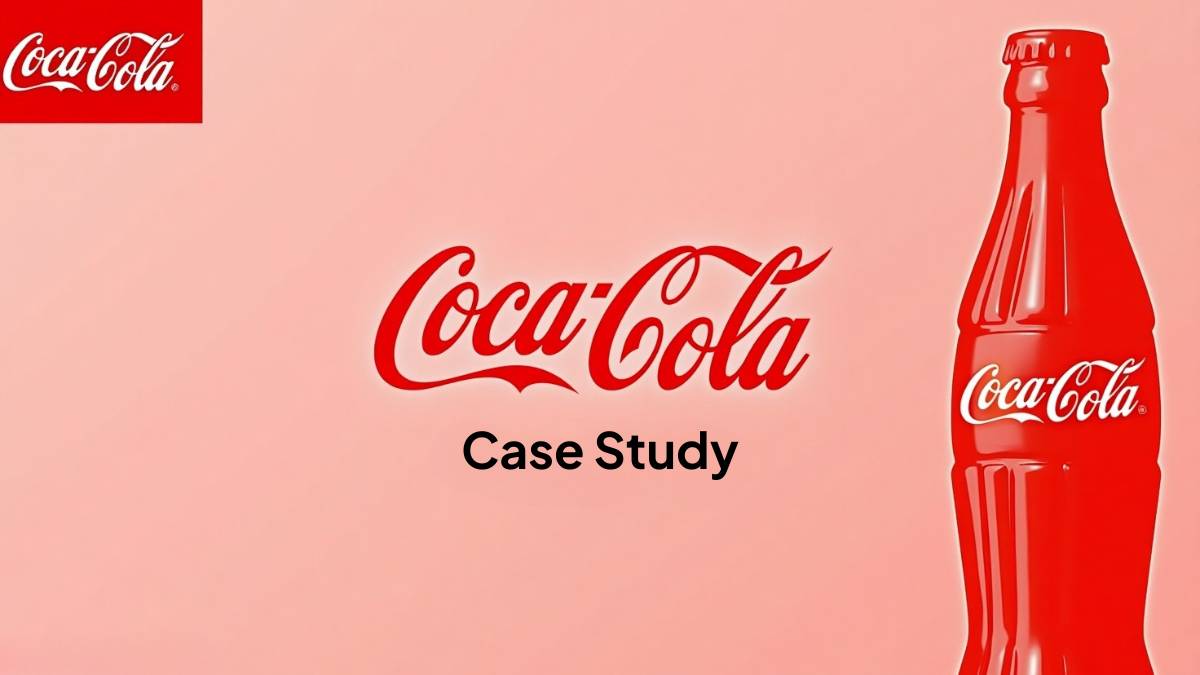Coca-Cola is everywhere. Whether you’re in India, the U.S., Europe, or even a small island somewhere, you’ll probably find a bottle of Coke. That’s how deep their global reach goes.
Table of Contents
But it’s not just about selling drinks. Coca-Cola has built an emotional connection with people. Over the years, it’s become a part of celebrations, traditions, and everyday moments.
For marketers, this is a goldmine of lessons. If you want to understand how to build a brand that lasts, how to connect with people across different cultures, and how to use simple messaging really well, Coca-Cola’s strategy is worth studying.
In this Coca-Cola Case Study, we’ll explore all of that and more.
Target Audience & Market Segmentation of Coca-Cola
Demographics
Coca-Cola doesn’t aim at just one group. It targets everyone from teenagers to older adults. That said, a lot of its ads speak directly to younger people—think 18 to 35 years old. They also make sure their pricing works for all income levels, so both middle-class families and students can afford a Coke.
Geographics
Coca-Cola is in over 200 countries, but they don’t use the same message everywhere. They localize. In India, they use Bollywood stars. In Mexico, they might focus on family time. Same product, but the message feels local and familiar.
Psychographics
They focus on emotions. People who enjoy social moments, celebrations, or just a good time with friends are the kind of audience they speak to. Their ads are full of happiness, sharing, festivals, and sports. It’s all about being part of joyful, everyday life.
The 4Ps of Coca-Cola’s Marketing Mix
Product
Coca-Cola makes lots of drinks. They have regular Coke, Diet Coke, and Coke Zero. They also sell Sprite, Fanta, and water. They stick to what works but try new stuff too. Sometimes they make special flavors for different countries. People know what to expect when they buy Coke.
Price
Coca-Cola doesn’t charge the same everywhere. In poor countries, they sell smaller, cheaper bottles. In rich places, they charge more for fancy bottles. They watch what Pepsi charges and try to stay close. They run sales and deals to get people buying. They know people will pay a bit extra for Coke over store brands.
Place
You can find Coke almost anywhere. They use trucks to get their drinks to small stores. They put vending machines in schools and offices. They make deals with McDonald’s and other restaurants. Even tiny villages in Africa have Coke signs. Their red coolers are in shops worldwide. You’re never far from a Coke.
Promotion
Coca-Cola spends tons on ads. They sponsor the Olympics and the World Cup. They make Christmas commercials with the red trucks. They put famous people in their ads. Now they do social media stuff too. They give free samples at events. Their ads don’t just sell the drink but good feelings, too.
Read in detail: What Is Marketing Mix? The 4 Ps of Marketing
Branding Elements: Visual Identity & Consistency
The significance of the classic bottle design, logo, and color scheme
The curvy Coke bottle stands out on shelves. You can tell it’s Coke just by feeling it in the dark. The red color jumps out at you. The white swirl and fancy writing haven’t changed much since old times. These things are as American as baseball now. Even people who can’t read know the Coke logo. The look is simple, but nobody mistakes it for anything else.
Maintaining brand consistency across various markets
Coke looks the same in New York and Nigeria. The red is always the same red. The logo doesn’t change. But they might put local language on bottles. Sometimes they add local designs for holidays. But you always know it’s Coke. They’re strict about how stores display their stuff. This helps people trust the brand no matter where they buy it.
Also Read: Amazon Case Study: Decoding Its Success
Iconic Coca-Cola Marketing Campaigns
Over the years, Coca-Cola has pulled off some of the most memorable and emotionally powerful marketing campaigns the world has ever seen. These weren’t just ads—they were moments that made people feel something, connect with the brand, and even talk about it years later. Let’s look at a few of their biggest hits and why they worked so well.
“Share a Coke” – Personalization at Its Best
This campaign was first launched in Australia in 2011 and quickly went global.
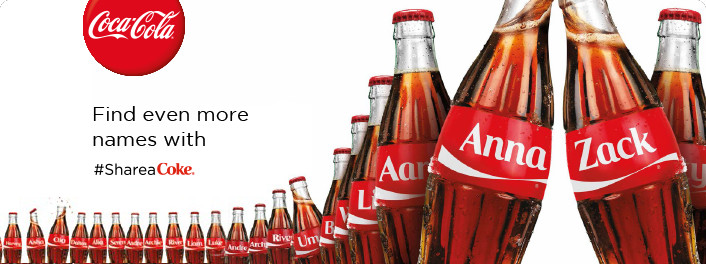
What they did:
- Replaced the Coca-Cola logo with popular names on bottles and cans.
- Encouraged people to find their name or a friend’s name, buy it, and share it.
- Ran with a huge push on social media—people started posting photos with their personalized bottles.
Why it worked:
- It made people feel seen and special.
- It was super shareable. Everyone loves posting something with their own name on it.
- It turned a regular drink into a small gift or gesture.
- It created a real buzz—especially among younger audiences.
How it helped:
- Sales spiked in markets where this campaign ran.
- It brought Coca-Cola into more personal moments—birthdays, parties, reunions.
- The brand felt more human and approachable.
“I’d Like to Buy the World a Coke” – The Hilltop Ad
This 1971 commercial showed young people from around the world singing together on an Italian hilltop.
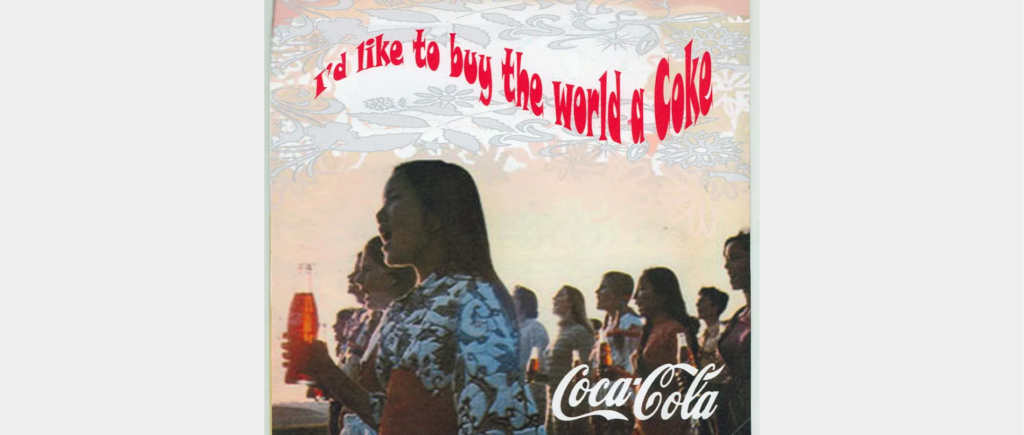
What they did:
- Created a song about buying the world a Coke to promote harmony
- Gathered a diverse group of young people to sing it together
- Released during a time of social unrest and Vietnam War tensions
Why it worked:
- Struck an emotional chord when people were hungry for unity
- The jingle was catchy – it later became a real hit song
- Showed regular people, not actors, from different backgrounds
- Positioned Coke as something that brings people together
How it helped:
- Became one of the most remembered ads of all time
- Shifted advertising from product features to emotional connection
- Created an association between Coke and peace/happiness
- Still referenced in pop culture decades later
Also Read: Netflix Case Study: Marketing Strategies and Tactics
“Holidays Are Coming” – The Christmas Trucks
First launched in 1995, these ads feature bright red trucks decorated with Christmas lights.
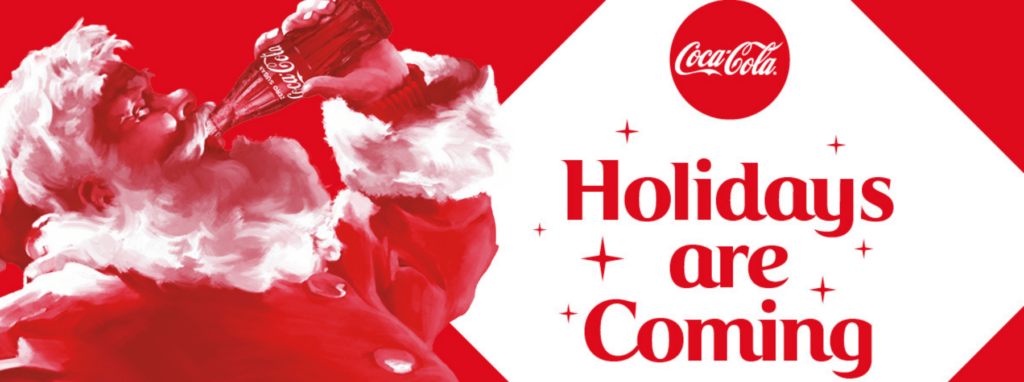
What they did:
- Created magical-looking Coca-Cola trucks that light up winter nights
- Used the catchy “Holidays are coming” jingle
- Started touring real trucks to visit towns and cities
Why it worked:
- Tapped into Christmas nostalgia and excitement
- Created a tradition people look forward to each year
- The trucks were both magical and realistic
- Combined the Coca-Cola red with Christmas red perfectly
How it helped:
- Many people now say Christmas starts when they see the ad
- Boosted winter sales during typically slower season
- Strengthened Coca-Cola’s long association with Christmas
- Created an annual media event when the ad first aired
“Happiness Factory” – Inside the Machine
This 2006 campaign used animation to show a fantasy world inside Coke vending machines.
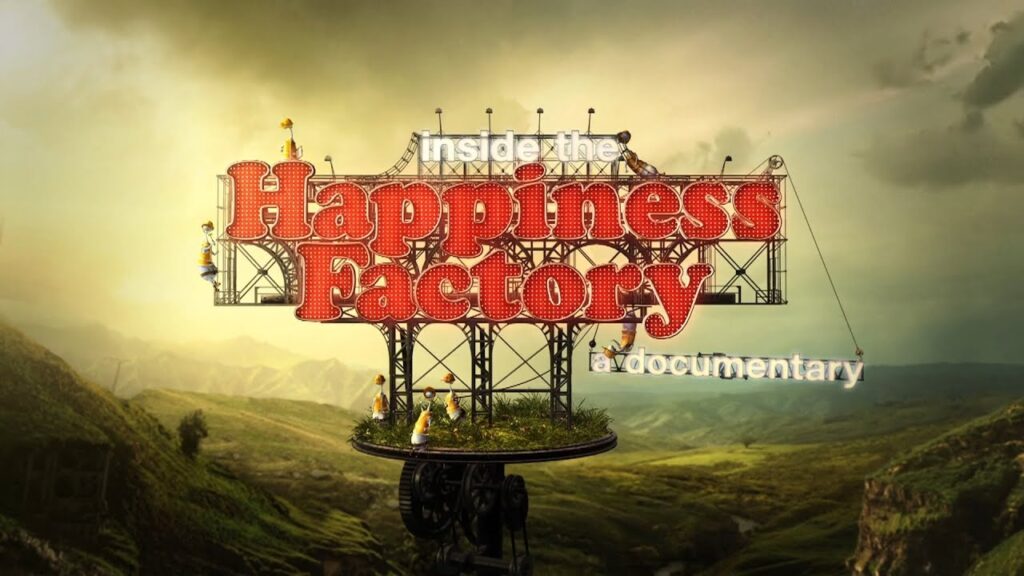
What they did:
- Created a cartoon world showing what “happens” inside a vending machine
- Showed cute creatures working to create the perfect Coke experience
- Extended the concept into multiple ads, games, and content
Why it worked:
- It was fun and unexpected – people hadn’t seen anything like it
- Appeal crossed age barriers – kids loved the creatures, adults the creativity
- Made the everyday act of buying a Coke seem magical
- The characters were memorable and charming
How it helped:
- Changed how people thought about vending machines
- Reinforced “happiness” as Coca-Cola’s core value
- Created characters and a world they could use again
- Made drinking Coke feel like part of something bigger
“Taste the Feeling” – Back to the Product
Launched in 2016, replacing “Open Happiness” to bring focus back to the product itself.
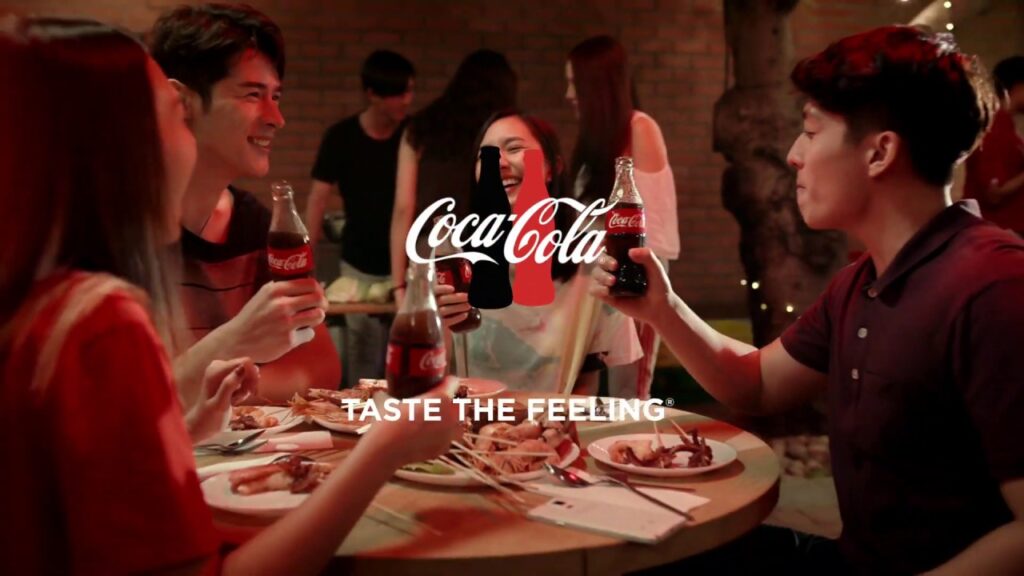
What they did:
- Created ads showing everyday moments made better with Coca-Cola
- Used the same approach across all Coke products, not separate campaigns
- Focused on the actual experience of drinking Coke
Why it worked:
- Showed real situations people could relate to
- Put the product front and center after years of more abstract campaigns
- Simple message that worked across cultures
- Beautiful photography made Coke look really refreshing
How it helped:
- Unified marketing for all Coca-Cola products
- Saved money by not needing separate campaigns
- Reminded people why they like drinking Coke
- Connected the product directly to good feelings
“The World’s Cup” – Global Sports Connection
This massive campaign tied Coca-Cola to the world’s biggest sporting event.
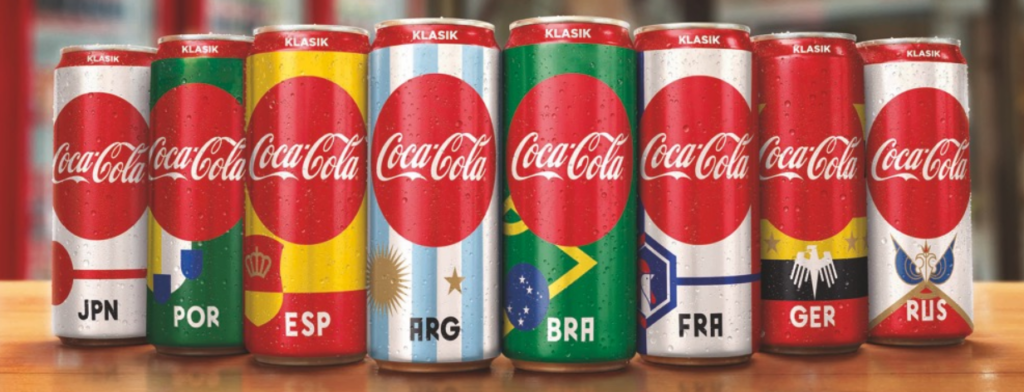
What they did:
- Created special packaging featuring flags from World Cup countries
- Sponsored the trophy tour through different nations
- Made ads celebrating soccer fans, not just players
- Ran the campaign in nearly every country
Why it worked:
- Tapped into the true global passion of soccer
- Celebrated fans as much as the game itself
- Created collectible packages people wanted to save
- Added excitement to the biggest sporting event
How it helped:
- Connected Coca-Cola with positive emotions of national pride
- Reached billions of viewers and consumers
- Created sales opportunities in markets around the world
- Reinforced Coca-Cola as a truly global brand
- Built goodwill through supporting something people love
Also Read: Starbucks Case Study: Marketing Strategy & Growth
Digital & Social Media Strategy of Coca-Cola
Social media platforms for engagement
Coca-Cola uses platforms like Instagram, Twitter, Facebook, and YouTube to stay connected with people. They post feel-good content, run seasonal campaigns, and encourage fans to share their own Coke moments. It’s not just about likes—it’s about keeping the brand part of everyday conversations.
Content marketing & influencers
The brand works with local influencers to create relatable content. They don’t just push ads—they create fun, story-driven posts that blend into people’s feeds. From TikTok challenges to short films, Coca-Cola uses content to stay relevant, especially with younger audiences.
Email & personalized communication
Coca-Cola sends out newsletters and campaign updates based on what customers care about. Whether it’s a birthday reward or early access to contests, their email marketing feels more like a friendly message than a sales push. It’s simple, but personal.
Also Read: Amul Case Study: Business Model, Marketing & Success Story
Sponsorships & Event Marketing
Global events like the Olympics & FIFA
Coca-Cola has sponsored the Olympics and the FIFA World Cup for decades. These events let them reach millions of passionate fans all at once. By being present where the excitement is, Coke stays top-of-mind in moments people care about deeply.
Why sponsorships matter
It’s not just about slapping a logo on a stadium. These sponsorships make people associate Coca-Cola with celebration, teamwork, and big emotions. It also helps the brand feel bigger than a soft drink—it becomes part of shared global experiences.
Also Read: AirBnb Customer Acquisition Case Study
Lessons for Modern Marketers
Emotional branding & storytelling
People remember how something makes them feel, and Coca-Cola gets this. Their campaigns are full of smiles, togetherness, and small joyful moments. Instead of pushing features, they sell feelings—and that’s a big reason why the brand sticks.
Localizing without losing the brand
Coca-Cola customizes its ads to fit different cultures, languages, and traditions—but always keeps its core message intact. That’s a smart balance. Marketers can learn how to stay relevant locally while building a globally trusted image.
Using tech & personalization
From name-on-a-bottle to targeted social media ads, Coca-Cola uses tech to speak directly to people. Whether it’s data-driven emails or real-time campaigns, they make the experience feel one-on-one, even though they’re a massive global brand.

Enroll Now: Advanced Digital Marketing Course
Conclusion
Coca-Cola has done something most brands only dream of. It’s not just about the drink, it’s the way they’ve made people feel over the years. Their marketing is smart, emotional, and consistent. They’ve figured out how to speak to people across different cultures without losing their identity.
If you’re in marketing, this brand is worth learning from. Focus on emotions. Stay consistent. Know your audience. And always be ready to evolve when the world changes. That’s what Coca-Cola has done, and that’s why they’re still everywhere.
Also Read: McDonald’s Case Study
FAQs: Coca-Cola Case Study
1. When was Coca-Cola launched in India?
It first came to India in 1950, left in 1977, and came back in 1993. It’s been growing ever since.
2. What are the Cola Wars?
It’s the name for the big fight between Coca-Cola and Pepsi, mostly in the ’80s and ’90s, where both tried to win over more customers with ads and offers.
3. How does Coca-Cola use social media?
They post fun, feel-good stuff and talk to people directly. They use it to stay in the conversation and keep the brand fresh.
4. What is Coca-Cola’s take on health trends?
They’ve added drinks like Diet Coke and Coke Zero for people who want less sugar but still want that Coke taste.
5. How does Coca-Cola adjust for different cultures?
They tweak their ads to match local languages, faces, and traditions—but the main message stays the same everywhere.
6. Why is storytelling so big in Coca-Cola’s marketing?
Because people remember feelings more than facts. Their stories make you smile, feel something, and that’s what sticks.

